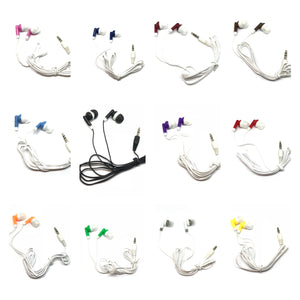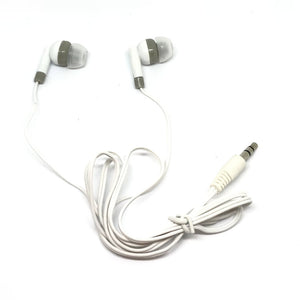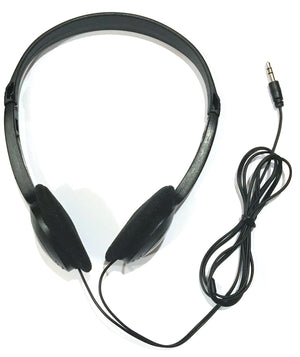Overcrowding in prisons isn’t just a statistic – it’s a daily reality for correctional staff. In the wake of the pandemic, U.S. prison populations are rising again, straining facilities that were already near capacity. State prison populations grew about 2% from 2021 to 2022 (reversing a decade-long decline)stateline.org, and by the end of 2023 the total U.S. prison population reached approximately 1.25 million inmates – a 2% increase from the year beforebjs.ojp.gov. Many prisons now hold far more people than they were designed or staffed for. For example, Alabama’s prisons were at 170% of their design capacity as of late 2022alabamaappleseed.org, and federal prisons are projected to reach 110% of capacity in 2024themarshallproject.org. Such overcrowding creates immense challenges for those who work behind the walls, affecting every aspect of operations, safety, rehabilitation, and staff wellbeing.
The Scope of the Overcrowding Crisis
Overcrowding strains space and resources in many prisons. In some facilities, gymnasiums or dayrooms are converted into makeshift dormitories, and recreation yards overflow during limited free time.
Nearly every state is grappling with overcrowding to some degree. Nationwide, dozens of prison systems are operating at or above their intended capacity. In Wisconsin, one maximum-security prison was recently at 145% of its designed capacity (housing 1,080 people in space meant for 749)stateline.org. In Texas, officials warn the inmate population will exceed available beds by the end of 2025stateline.org. Even historically lower-incarceration states have seen populations rebound. As a result, double-bunking and even triple-bunking of inmates has become commonojp.gov, and facilities not built for large populations are being pushed to their limits. Overcrowding is not confined to one region or security level – it is a coast-to-coast challenge affecting maximum-security penitentiaries and lower-security prisons alike.
This level of crowding directly impacts those who work in these institutions. Correctional officers find themselves supervising far more inmates than normal, stretching thin the staff-to-inmate ratio. Basic infrastructure (showers, toilets, meal kitchens) experiences heavier wear and frequent breakdowns due to overuse. Many prisons have had to improvise housing and schedules to accommodate the overflow – tactics like converting gyms to dorms, or running segregated meal and recreation shifts – which complicate daily routines for staff. In short, when a prison built for 1,000 holds 1,400 people, everyday operations become an uphill battle.
Impact on Daily Operations
Overcrowding throws a wrench into the daily operations of a prison. Facilities designed for a smaller population struggle to provide basic services and maintain order when capacity is exceeded. Key operational impacts include:
-
Strained Schedules and Resources: With more inmates than space, routine activities like meals, recreation, showers, and telephone time must often be staggered or shortened. Staff must coordinate complex schedules to rotate large inmate groups through limited facilities. Many prisons have resorted to frequent lockdowns (confining inmates to cells) simply to manage day-to-day functionsstateline.org. For example, chronic overcrowding combined with understaffing led some institutions to lock down for weeks or months at a time in 2023-2024, severely disrupting normal operationsstateline.org. While locked down, inmates eat in their cells and miss out on work or programs – conditions far from ideal for both prisoners and staff.
-
Facility Wear and Tear: Overcrowding accelerates the deterioration of prison infrastructure. Plumbing, ventilation, and food services are stretched beyond their intended capacity. Maintenance crews (often already understaffed) struggle to keep up with repairs. This means corrections staff might deal with more frequent power outages, plumbing floods, or other facility issues that complicate their workday. Something as simple as running out of meal trays or having not enough uniforms can become a daily concern when inmate numbers soar.
-
Challenges in Inmate Management: Managing inmate movement and housing assignments becomes more difficult. Proper classification (separating inmates by security level or compatibility) is harder to maintain when beds are scarce – increasing the risk of putting incompatible inmates together. Crowded housing units (whether double-bunked cells or packed dormitories) are noisier and more chaotic, making it tougher for officers to monitor inmates. Inmate counts (verifying everyone is present) take longer with more people, and each task on a guard’s shift – from escorting inmates to the infirmary to supervising recreation – involves larger groups and greater vigilance. This added complexity in routine tasks increases stress and leaves less time for proactive supervision or positive interactions.
For correctional staff, these operational strains mean longer hours and constant pressure. Many officers must work mandatory overtime to cover all posts when a prison is over capacity. A task as routine as meal distribution can turn into a multi-hour undertaking for staff when thousands need to be fed in shifts. The day’s schedule can change at a moment’s notice if a fight or incident erupts – a common occurrence when conditions are so cramped. In short, overcrowding turns the already challenging job of running a prison into a potential logistical nightmare, requiring near-heroic efforts from staff just to accomplish the basics.
Safety and Security Concerns
Prison overcrowding directly undermines safety and security, affecting both incarcerated people and staff. When facilities hold too many people, tensions run high and dangers multiply:
-
Increased Violence: Packed conditions contribute to more frequent fights, assaults, and violent incidents. In Alabama’s overwhelmed prisons, for instance, inmate-on-inmate assaults and attacks on staff soared by over 41% in 2023 compared to the previous yearaldailynews.com. Over 2,000 inmate assaults were recorded there in one year, including nearly 500 assaults against correctional staffaldailynews.com – an alarming indicator of how unsafe conditions have become. Crowding amplifies stress and conflict; small disputes over phones, bunk space, or even walking in a tight hallway can quickly escalate when too many people are crammed together. For correctional officers, this means a day on the job carries a higher risk of breaking up fights or, worse, becoming the target of frustrated or aggressive inmates.
-
Officer to Inmate Ratio: In overcrowded prisons, the inmate-to-officer ratio grows, leaving each officer responsible for supervising more individuals at once. This makes it harder to spot brewing problems or respond before an incident gets out of control. Many states are also experiencing severe staffing shortages, compounding the safety issue. Some Texas prisons, for example, operate with a 70% officer vacancy rate, meaning fewer than half the necessary officers are on dutystateline.org. Under those conditions, maintaining security is an uphill battle. Fewer officers on the tiers or in dorms means less deterrence against violence and slower response times when fights or emergencies occur. Staff often report feeling outnumbered and vulnerable when backup is limited – a dangerous situation for everyone.
-
Use of Lockdowns and Restricted Movement: As a last resort to maintain safety, prisons may impose extended lockdowns or restrict inmate movement because they lack the staff to securely manage a crowded population. These prolonged lockdowns have been seen in multiple states and can themselves fuel tensions. In Wisconsin, one overcrowded prison was under some form of lockdown for over a year, during which at least five inmates died and numerous violent incidents occurredstateline.orgstateline.org. Lockdowns keep incidents from spreading, but they also intensify frustration among inmates (who are confined 23+ hours a day) and exhaustion among staff (who must monitor restless inmates around the clock). Michele Deitch, a prison policy expert, noted that many facilities have resorted to such extreme measures “for the convenience and management of the institution” under strainstateline.org. This stopgap approach underscores how overcrowding forces prisons into security trade-offs that can violate normal standards and put everyone on edge.
-
Contraband and Gang Control: Overcrowded conditions can embolden prison gangs and make contraband control harder. With more inmates packed in, there are more hiding places and more opportunities for illicit items (weapons, drugs, cell phones) to circulate. During one recent lockdown of a crowded penitentiary, officers uncovered numerous homemade weapons and contraband that had proliferated amidst the chaosstateline.org. High inmate density can dilute the effectiveness of searches and surveillance – there’s simply more to scan and more ground for a limited staff to cover. Empowered gangs and contraband not only threaten inmate safety but also target officers, undermining overall security.
For correctional staff, these safety challenges are personal. Every shift carries uncertainty and danger. Officers must be hyper-vigilant in overcrowded units, knowing that a minor incident can spiral into a major disturbance in the blink of an eye. The stress of walking among restless inmates, the possibility of assault (as seen in Alabama’s statisticsaldailynews.com), and the mental toll of constant alertness can lead to anxiety and burnout. Many officers also report feeling unable to protect inmates under their care in such conditions, which is demoralizing for professionals dedicated to maintaining order and safety. Overcrowding effectively puts everyone at risk – it is a threat multiplier that makes prisons more volatile and unpredictable places to work.
Challenges to Rehabilitation and Inmate Care
Prisons are not only about custody but also about correction and rehabilitation – goals made far more difficult by chronic overcrowding. When facilities are over capacity, programming and services for inmates often suffer:
-
Limited Access to Rehabilitative Programs: Educational classes, vocational training, substance abuse treatment, and other programs are typically capped by space and staffing. Overcrowding means long waiting lists for inmates to get into classes or treatment programsojp.gov. There may be 100 inmates who need a GED class, but only 20 seats available per session. Many incarcerated people end up idle, spending months (or years) on waiting lists for programs that are required for parole or simply beneficial for their growth. This undermines the core mission of rehabilitation. Evidence from federal prisons has shown that as crowding increased, so did waiting lists for education and drug treatment, and meaningful work opportunities became scarceojp.gov. In short, overcrowding “compromises the provision and effectiveness of rehabilitation programmes, educational and vocational training, and recreational activities”penalreform.org. Idle time and lack of constructive activity are a recipe for frustration and misbehavior, which staff then have to manage.
-
Therapy, Counseling, and Case Management Overload: Counselors, social workers, and case managers in prisons carry enormous caseloads when inmate populations swell. A case manager might be responsible for 300 inmates, making it nearly impossible to provide individualized reentry planning or counseling. Mental health services are similarly stretched thin; overcrowding and the stress it creates exacerbate mental health issues among inmatespenalreform.org, yet accessing a psychologist or psychiatrist in a packed prison can take weeks. This puts vulnerable inmates at higher risk of self-harm and suicide (which have been known to increase in overcrowded systemspenalreform.org) and leaves officers on the front lines of managing mental health crises without adequate clinical support.
-
Reduced Rehabilitation Efficacy: Even when programs exist, delivering them in an overcrowded environment is challenging. Classroom spaces might be repurposed for housing or simply can’t accommodate all who want to attend. In some cases, prison lockdowns due to staffing shortages have led to the suspension of rehabilitative classes, job training, and visitation for extended periodsstateline.org. Inmates lose the routine and positive reinforcement these activities provide. For correctional educators or program staff, it’s disheartening to turn eligible participants away due to lack of space. For custody staff, having large numbers of bored, idle inmates means more behavior issues to supervise. The lack of rehabilitation opportunities can fuel a vicious cycle: inmates leave prison without skills or preparation, which increases recidivism – and a return to custody adds to the overcrowding problem. In essence, overcrowding today can breed the repeat offenders of tomorrow by hampering rehabilitation.
-
Basic Care and Living Conditions: Important aspects of inmate care, from healthcare to nutrition, are strained. Prison medical units often cannot keep up with sick call requests when the population surges. In some extreme cases, inmates have resorted to desperate measures – for example, an incarcerated man in Missouri pulled out his own teeth after failing to get timely dental care amid severe staffing shortagesstateline.orgstateline.org. While extreme, this incident underscores how both medical services and inmate patience are stretched thin. Overcrowding also means more inmates per nurse or doctor, longer waits for clinic appointments, and hurried interactions. Recreation and exercise – vital for physical and mental health – are curtailed when yards and gyms are overfilled or repurposed, further diminishing quality of life. For staff, this can manifest in more medical emergencies to respond to and more inmates in ill health or poor condition, which complicates their duties.
Correctional staff witness firsthand the human side of overcrowding: inmates who want to better themselves but can’t get into a class, or who deteriorate mentally under extreme idleness and stress. Many officers and staff joined corrections to help rehabilitate offenders and maintain humane conditions; overcrowding can feel like a personal defeat of those aims. It’s frustrating for staff to manage restless, under-occupied inmates day after day, knowing that meaningful activities could improve behavior and outcomes if only there were room and resources. Over time, this situation erodes morale for both staff and inmates, as prisons risk becoming mere warehouses rather than places of reform. For correctional workers, seeing the same people return through the gates due to failed rehabilitation efforts is demoralizing – a stark reminder that without addressing overcrowding, the cycle will continue.
The Toll on Correctional Staff Wellbeing
Perhaps the most profound impact of prison overcrowding is on the wellbeing of correctional staff themselves. Those who work in prisons – officers, medical staff, counselors, support personnel – face grueling conditions when facilities are packed beyond capacity:
-
Staffing Shortages and Burnout: It’s no coincidence that as prison populations have risen, staffing levels have hit historic lows. In 2023, the number of people working in state prisons fell to its lowest level in decadesstateline.org, leaving many institutions critically understaffed. Overcrowding and understaffing feed each other in a vicious cycle: a flooded prison environment leads to overwork, stress, and dangerous conditions, which in turn drive many officers to quit, further worsening the staffing crunchstateline.orgstateline.org. Remaining staff often shoulder back-to-back shifts and mandatory overtime, with little opportunity for rest. This relentless pace leads to burnout, physical exhaustion, and mental health struggles among corrections employees. High turnover means inexperienced staff on the tiers, which can pose additional safety risks and stress for those veterans who remain. One former officer described it as “a system stretched beyond its limits,” where new hires quit quickly once they encounter the harsh reality of working an overcrowded prisonstateline.org.
-
Mental Health Strain: Working daily in an overcrowded, high-stress environment takes a psychological toll. Correctional officers already face rates of PTSD, depression, and suicide higher than the general population – and overcrowding intensifies the trauma triggers. Constant hyper-vigilance, the ever-present threat of violence, and the moral injury of being unable to effectively help or protect inmates can weigh heavily on staff. Poor working conditions – like supervising housing units so packed that chaos feels normal – contribute to feelings of hopelessness or cynicism. If every day is a battle to maintain control, with no relief in sight, staff can become numb or overly hardened as a coping mechanism. Worker advocates note that if issues like mandatory overtime and dangerous conditions continue, recruitment incentives alone won’t solve the staffing crisisstateline.org. In other words, taking care of staff mental health and safety is essential to retaining them. Overcrowding directly undercuts that, by making the prison workplace more hazardous and stressful than it needs to be.
-
Physical Danger and Injury: As noted earlier, assaults on staff tend to rise in overcrowded prisons. Correctional officers have one of the highest rates of non-fatal on-the-job injuries, often from confrontations with inmates. In Alabama, nearly 500 incidents of inmates attacking staff in one year illustrate the magnitude of risk officers facealdailynews.com. Every time a prison is short on officers for a shift, those on duty are at greater risk if a disturbance breaks out – they may not have immediate backup. Additionally, officers in overcrowded prisons might forgo certain security protocols (like thorough pat-downs or cell searches) simply because they lack time or personnel, inadvertently putting themselves in more danger of encountering a hidden weapon. The chronic stress also has physical manifestations for staff: high blood pressure, ulcers, and other stress-related illnesses are not uncommon among career correctional officers. Nurses and medical staff working in packed prisons deal with huge patient loads and the emotional strain of triaging care in a constrained environment, which can also lead to burnout or errors with serious consequences.
-
Impact on Morale and Family Life: The job’s demands often spill into personal life. Working double shifts means missing family events and getting inadequate sleep before returning for the next shift. High stress can lead to difficulties at home, and many correctional staff report strained relationships or withdrawal from social activities due to the toll of the job. Morale on the job also suffers – it’s hard to stay positive and mission-focused when each day feels like “survival mode.” Yet, despite these hardships, many staff continue to show up out of dedication and camaraderie with their fellow officers. They share a bond forged under pressure, though that solidarity is tested with each new wave of inmates exceeding capacity. Low morale and high fatigue can in turn affect job performance, creating a dangerous feedback loop in a correctional setting.
For administrators and policymakers, the message from the front lines is clear: correctional staff are stretched to the breaking point. Overcrowding is not an abstract policy issue for them – it determines whether they go home safe, how many hours they work, and whether they feel pride or despair in their profession. Any solution to the prison overcrowding crisis must prioritize the wellbeing of staff who run these institutions day-to-day. As one veteran officer put it, you can’t simply “lock down” your way out of these problems – real relief for staff will require reducing the pressure inside the cellblocksstateline.org.
Strategies to Alleviate Overcrowding
Addressing prison overcrowding is a complex challenge, but numerous practical solutions are being proposed or implemented across the country. Many of these focus on reducing the inflow and accelerating the outflow of inmates in safe, sensible ways, rather than simply building more prisons. Here are some key strategies under discussion – all of which have real implications for making correctional staff jobs more manageable:
-
Sentencing Reform: One long-term solution is to adjust the laws and policies that send people to prison in the first place. Many states are re-examining harsh sentencing practices from the past. Reforms include reducing or eliminating mandatory minimum sentences for non-violent offenses, raising the threshold for felony theft (so that minor thefts don’t result in prison terms), and reclassifying certain drug possession offenses from felonies to misdemeanors. These changes can significantly cut down the number of new admissions. For example, states that embraced “justice reinvestment” strategies over the last decade saw their prison populations drop and overcrowding easeunomaha.edupenalreform.org. Implications for staff: Fewer low-level offenders behind bars means officers can focus on a smaller population that truly needs secure confinement. This can reduce crowding-related tension on the units and free up resources for rehabilitative work with higher-risk inmates. Sentencing reform is fundamentally about using prison space more judiciously, reserving it for those who pose a genuine threat to public safety and thereby lightening the burden on facilities and staff.
-
Early Release and Parole Programs: Another approach is identifying inmates who can be safely released earlier than their original sentence through parole or specialized programs. Many states are expanding parole eligibility or improving parole processes so that people who have shown rehabilitation and low risk can transition out of prison under supervision. Some have implemented geriatric parole or medical furloughs, recognizing that elderly and infirm prisoners are costly to keep locked up and generally pose low public safety risks. At the federal level, the First Step Act and related measures allowed certain inmates to earn time credits toward early release for completing programs, and pilot initiatives like the Elderly Offender Home Confinement Program enabled some older prisoners to serve the remainder of their sentence at homethemarshallproject.org. During COVID-19, thousands of people were moved to home confinement under the CARES Act to reduce crowding, proving that with monitoring, many can finish their sentences in the community without incidentthemarshallproject.org. Implications for staff: When appropriately vetted inmates are released early, it directly relieves crowding pressure. This means fewer inmates on each cellblock and in each class, translating to a safer and more manageable environment. It also boosts morale for staff to see parole working as an incentive for good behavior – it reinforces the idea that rehabilitation is rewarded. Of course, effective early release programs require robust reentry support (halfway houses, supervision, etc.), but when done right, they can lower headcounts and stress levels inside prisons. Importantly, releasing those who are older or medically fragile can also reduce the strain on prison medical units and budget, allowing better care for those who remain.
-
Alternative Sentencing Models: Not every offense or offender requires a prison term. Alternative sentencing (or alternatives to incarceration) offers other ways to hold individuals accountable and change behavior without adding to prison overcrowding. Examples include community service, probation, house arrest with electronic monitoring, drug courts and mental health courts that divert people into treatment, and short-term residential programs. Many jurisdictions now use risk assessment tools to determine if someone can be safely managed in the community rather than being sent to an already crowded prison. Investing in non-custodial alternatives – especially for low-level, first-time, or nonviolent offenders – is a key recommendation from experts to reduce overcrowdingpenalreform.org. Likewise, diverting minor cases out of the criminal justice system (through civil citations or restorative justice programs) can prevent unnecessary incarcerationpenalreform.orgpenalreform.org. Implications for staff: Each offender successfully handled through an alternative program is one less person in custody for officers to supervise. This can significantly ease caseloads and improve the staff’s ability to manage those who remain. Furthermore, alternatives like treatment programs can address root causes (addiction, mental illness) more effectively than prison, potentially reducing recidivism. Correctional staff benefit when the system isn’t overburdened by people who might not truly need to be there. In states like Georgia and Texas, for instance, expanding diversion for drug offenses and technical probation violators has helped slow the growth of prison populations, which in turn prevents crowding from worsening. Embracing alternative sentencing is about being smarter with punishment – aligning the response to the severity of the crime and the individual’s risk, rather than reflexively using prison as the default. This strategy can stabilize populations and make the job of managing prisons more sustainable.
-
Expanded Reentry and Rehabilitation Initiatives: Reducing overcrowding isn’t only about front-end changes; it’s also about ensuring people don’t come back. That’s where reentry programs and in-prison rehabilitation become crucial. Recent years have seen a push across various states and the federal system to improve reentry support – job training, education, mental health treatment, and housing assistance for those about to be released. The logic is simple: if fewer released individuals reoffend and return, prison populations will decline over time. On a national level, these efforts have shown promise: since the Second Chance Act was passed in 2008, state recidivism (reincarceration) rates dropped by about 23%ojp.gov. And just in the past year, leadership in states like Missouri, Alabama, North Carolina, and Nebraska set bold goals to cut recidivism 50% by 2030, launching initiatives to improve access to treatment, jobs, and housing for ex-prisonersojp.govojp.gov. The federal Bureau of Prisons has also expanded rehabilitative programming – adding 19 new programs since 2021 and greatly increasing inmate participation in classes and treatment by 2024bidenwhitehouse.archives.gov. All of these efforts aim to equip people in custody with the skills and support to succeed after release, thereby breaking the cycle of reoffending that fuels overcrowding. Implications for staff: In the short term, prioritizing rehabilitation and reentry prep can make for a more positive prison environment – inmates engaged in programs are generally easier to manage than those with nothing to lose. In the long term, as recidivism falls, officers see fewer familiar faces cycling back through intake. That means lower populations and a safer workplace. It’s uplifting for correctional educators and officers alike to witness inmates making real progress (earning diplomas, learning trades, overcoming addiction) and then not returning. Moreover, when reentry initiatives are robust, correctional staff can shift some focus from pure security to being partners in rehabilitation – which many find more rewarding. Ultimately, successful reentry programs reduce the strain on prisons by shrinking the incarcerated population over time, creating a virtuous cycle that benefits public safety, taxpayers, incarcerated individuals, and the staff who supervise them.
It’s worth noting that some states have also considered expanding capacity (i.e. building new prisons) as a response to overcrowding – for example, Alabama approved construction of two large new prisonsaldailynews.com. While new facilities might temporarily relieve pressure, they are extremely costly and can take years to complete, and without policy changes, they risk simply filling up and perpetuating mass incarceration. The consensus among experts is that sustainable solutions lie in reducing the prison population to match capacity, rather than continually increasing capacity to match an ever-growing populationojp.gov. For correctional staff on the ground, the hope is that these reforms and initiatives result in tangible relief: fewer inmates to supervise, safer conditions, and more manageable workloads.
Conclusion: A Safer Path Forward
Overcrowding in U.S. prisons is a challenge that has been decades in the making, and it will take a concerted effort by policymakers, correctional leaders, and communities to resolve. The real-world implications for correctional staff cannot be overstated. When prisons overflow, it is the men and women working inside who must pick up the pieces – juggling too many responsibilities, walking into housing units that feel like powder kegs, and striving to uphold safety and rehabilitation under incredibly adverse conditions. The stress and danger they face are not abstract; they are felt in every overtime shift, every alarm bell that rings, and every program postponed due to lack of space or staff.
The encouraging news is that many states and the federal system have recognized the urgency of the problem and are taking action. Sentencing reforms, smarter diversion programs, earlier release for those who qualify, and robust reentry support can turn the tide. These strategies treat the causes of overcrowding, not just the symptoms. For correctional officers and staff, such changes promise a more balanced environment – one where they can build professional pride in helping inmates transform their lives, rather than just managing restless crowds. Reducing prison overcrowding will make prisons safer workplaces and more effective institutions of rehabilitation. It will mean getting back to normal: being able to run regular rec programs and classes without constant lockdowns, having adequate backup on duty, and coming home at the end of a shift knowing you made a positive difference.
Every day that overcrowding is mitigated – even slightly – translates into fewer crises for staff to manage and more time to focus on constructive work. It improves the odds that everyone in the facility, officers and inmates alike, goes home safe. Ultimately, tackling the overcrowding crisis is not only a matter of justice for those incarcerated, but also an essential investment in the safety, health, and effectiveness of the correctional workforce. By supporting policies that responsibly shrink prison populations and by providing resources to implement them, we can ensure that the people who work in our prisons are given the conditions they need to do their jobs with professionalism and care. The path forward is challenging, but with sustained commitment to reform, there is hope that American prisons can become less crowded, less volatile places – benefiting staff, inmates, and public safety as a whole.
Sources:
-
Bureau of Justice Statistics – Preliminary Data on 2023 U.S. Prison Populationbjs.ojp.govstateline.org
-
Alabama Appleseed – Report on Alabama Prison Overcrowding and DOJ Lawsuitalabamaappleseed.orgaldailynews.com
-
The Marshall Project – Federal Prisons Over Capacity and Program Changesthemarshallproject.orgthemarshallproject.org
-
Stateline/Pew – State Prison Lockdowns from Overcrowding & Understaffingstateline.orgstateline.org
-
GAO Report (via OJP) – Impact of Overcrowding on Federal Prisons (double-bunking, program waitlists)ojp.gov
-
Penal Reform International – Global insights on overcrowding’s consequencespenalreform.orgpenalreform.org
-
Stateline – Staffing Crisis: Vacancy Rates and Projected Capacity Shortfallsstateline.orgstateline.org
-
Alabama Daily News – Surge in Violence in Overcrowded Alabama Prisonsaldailynews.com
-
Stateline – Effects of Lockdowns and Staff Shortages on Prison Safetystateline.orgstateline.org
-
Prison Policy Initiative – State Population Trends Post-Pandemicprisonpolicy.org (examples of states reducing vs. increasing prison populations)
-
Bureau of Justice Assistance/CSG – Recidivism Reduction and Reentry Success (Reentry 2030 goals)ojp.govojp.gov
-
White House Fact Sheet (Apr 2024) – Expanded Federal Reentry Programs and Resultsbidenwhitehouse.archives.gov






